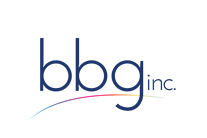This month certain employers may be receiving rebate checks from their insurance carriers. Some may have received checks last year and know what to do. Others may be receiving the checks for the first time and scratching their heads on what to do with the rebates. Here’s a primer summarizing key points that may help guide you.
What is it? Medical Loss Ratio Rebates (MLR) are a provision of the Affordable Care Act requiring insurance companies to issue a refund if they do not spend at least 80% (small group and individual; 85% large group) of premium on healthcare related services with no more than 20% going toward administrative costs.
What to do with the check? Rebates are considered plan assets to be used for providing benefits to enrollees and defraying plan costs. Employers are entitled to keep a portion of the rebate commensurate with the company’s percentage contribution to total premium. The remainder must be allocated to the benefit of those enrolled in the plan(s). Employers have some flexibility in terms of how to distribute the rebate. At a high level, the options include:
- Reduce employees’ portion of premium for the next policy year.
- Provide a cash refund to those employees covered under the health plan(s) associated with the rebate.
Allotment of the rebate needs only to include current employees. Employers are not required to track down or include former employees in the distribution or apportionment of rebates (any Cobra enrollees being the exception).
To drill into the technical details go to http://www.dol.gov/ebsa/pdf/tr11-04.pdf. IRS guidance on tax implications of the rebates can be found at http://www.irs.gov/uac/Medical-Loss-Ratio-(MLR)-FAQs.
